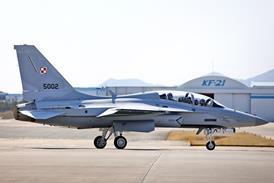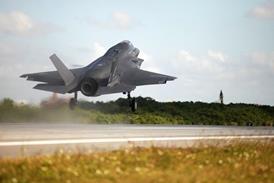When an aircraft still feels like the latest new thing, it is hard to think of it as a "mature" programme, but that is where Eurofighter Typhoon sits in the Ontic business plan.
BBA Aviation subsidiary Ontic is a producer of parts manufacture approved parts and a licensed acquirer of original equipment manufacturer legacy products and systems. It brought the Typhoon into its portfolio with its $62.5 million cash acquisition this year of GE Aviation Systems' UK-based legacy fuel measurement business.
The business, which also has bases in the USA and Singapore and produced earnings of $9 million last year on revenues of $43 million, specialises in manufacturing and overhauling fuel gauges and measurement systems and brought the Airbus A319/A320 as well as the Boeing 777 into the Ontic orbit, in addition to the AgustaWestland AW101 and BAE Systems Hawk T2.
Ontic president Peg Billson says the company's activities range from support of mature products like Eurofighter - that is, products which are beyond development and early manufacture - to aircraft that are in the tail-end of their production lives or even out-of-production legacy models.
 |
|---|
Peg Bilson |
By licensing support to Ontic, she says, the OEM can focus on doing what it does best - new model development and production. Ontic's strength is to step in where OEMs naturally can spend less attention, on older products and especially legacy products, where their support capacity is limited.
Ontic can do this efficiently as - again, unlike an OEM - it is a business designed to provide a diverse mix of low-volume parts and services. As Ontic does not develop products, it can afford to invest in inventory. Supply chain management - and rationalisation - is Ontic's speciality, says Billson.
Key Ontic licences include Goodrich landing gear in the USA, which helped it win a competitive bid to supply parts to the US Army for the Apache helicopter, and Kidde Graviner gaseous emergency oxygen equipment in the UK.
With the GE acquisition, Ontic will be focusing on expanding its business with UK and European OEMs, on very large commercial transports (such as the Boeing 777) and on developing its capabilities in electronics support, particularly in moving to a third-generation electronics capability.
A key early priority is to move the GE business out of its facilities in Cheltenham into a new facility adjacent. A similar move was made on a smaller scale following a previous UK acquisition two years ago, in Slough.
At Paris, she says the plan is to raise Ontic's profile with existing and potential customers.
Right now, says Billson, the business in the USA and UK is about 40% military, 30% commercial transports and freighters and 30% business aviation. The military business is attractive. With defence budgets under pressure and many new aircraft development projects facing delays, there is growing demand to extend aircraft life.
A growing number of derivatives of large airliners complicated the support operation, playing to Ontic's strengths. Interest in freighter conversions also suggests future business opportunities for Ontic.
Like most operations exposed to the business jet sector, Ontic faces mixed fortunes there. While the large-cabin segment is recovering nicely from the financial crisis, owners of smaller jets are having to choose between overhauling aircraft or parking them.
Ultimately, says Billson, Ontic's unique value proposition is to deliver original-condition support for as long as there is demand.
- All the latest news, images and video from the 2011 Paris air show
Source: Flight Daily News























